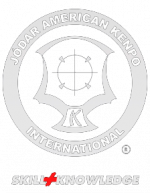The investor specifies the limit price, thus ensuring that the stop-limit order will only be filled at the limit price or better. However, as with any limit order, the risk here is that the order may not get filled at all, leaving the investor stuck with a money-losing position. It is only https://www.forexbox.info/strategies-for-intraday-trading-fibonacci/ executable at times when the trade can be performed at the limit price or at a price that is considered more favorable than the limit price. If trading activity causes the price to become unfavorable regarding the limit price, then the activity related to the order will be ceased.
- However, as with any limit order, the risk here is that the order may not get filled at all, leaving the investor stuck with a money-losing position.
- With any type of limit order, including stop-limit orders, you aren’t guaranteed execution, because the stock may trade below the limit price before the order can be filled.
- Data contained herein from third party providers is obtained from what are considered reliable sources.
- There is no guarantee that execution of a stop order will be at or near the stop price.
This means that the order will be executed at the best available market price which may be different from the stop price. In contrast, a stop-limit order becomes a limit order when the stop price is reached, and will only be executed at the limit price or better. Market participants can see when you have entered a limit order, which tells your broker to buy or sell an asset at an indicated limit price or better.
Example 1: Protecting Profits
Entering a 5%, or a three-point, stop order on XYZ stock would likely provide adequate protection and reduce the risk of being stopped out too soon. Regardless of what methodology you use, be careful not to place the stop price too close to the current price, or the order might be triggered by regular daily price fluctuations. Similarly, you don’t want to place the stop price https://www.day-trading.info/java-9-certification-myexamcloud/ too far from the current price, or you may sustain a sizable loss before you exit the position. With a trailing-stop order (to sell), the stop price trails the bid price of the stock as it moves higher. The stop price essentially self-adjusts and remains below the market price by the number of points, or the percentage, that you specify, as long as the stock is moving higher.
Limit Orders vs. Stop Orders: An Overview
Gordon Scott has been an active investor and technical analyst or 20+ years. There is no guarantee that execution of a stop order will be at or near the stop price. Schwab does not recommend the use of technical analysis as a sole means of investment research.
She purchased ABC Foods at $85 per share and has made a decent profit already. She believes the stock price has the potential to continue to rise even more, should the price reach $105, and she would like to take part in that momentum. So Sally enters a buy stop order to buy additional shares of ABC Foods at $105 per share.
Order Types: Market, Limit and Stop Orders
Stop orders can be adjusted in the direction of the trade if the market moves in your favor, but you should never move a stop away from the direction the market is moving. For example, if you’re long and the market is moving lower, you should never lower your stop from where you originally placed it. Hopefully, you have compiled a complete trade strategy (entry, stop-loss, and take-profit) before entering the market. For example, a trader may buy a stock and place a stop-loss order with a stop 10% below the stock’s purchase price. Should the stock price drop to that 10% level, the stop-loss order is triggered and the stock would be sold at the best available price.
If the stock price has dropped sharply, and a sell order cannot be executed at $48.50 or higher, the 100 shares of XYZ will remain unsold. A stop-loss order does not offer any price protection beyond the stop price. This means that if the market is experiencing rapid price movements or gaps, the trade may be executed at a price below the stop price. On the other hand, a stop-limit order offers price protection as it specifies a limit price at which the trader is willing to buy or sell. A stop order is filled at the market price after the stop price has been hit, regardless of whether the price changes to an unfavorable position.
The next chart shows a stock that “gapped down” from $29 to $25.20 between its previous close and its next opening. A market order is an order to buy or sell a stock at the market’s current best available price. A market order typically ensures an execution, but it doesn’t guarantee a specified price. Market orders are optimal when the primary goal is to execute the trade immediately. A market order is generally appropriate when you think a stock is priced right, when you are sure you want a fill on your order, or when you want an immediate execution. It helps to think of each order type as a distinct tool, suited to its own purpose.
A limit order is executed at the price you specified or better, which can slightly reduce the chances of the order executing compared to a stop order. If the stock price never hits your limit, your trade won’t execute; a stop order would execute because it uses the best available price. There are several types of stop orders that can be employed depending on your position and your overall market strategy.
Now that you’re long, and if you’re a disciplined trader, you’ll want to immediately establish a regular stop-loss sell order to limit your losses in case the break higher is a false one. A trader buys 100 shares of XYZ Company for $100 and sets a stop-loss order at $90. The trader’s stop-loss order gets triggered and the position united states treasury security is sold at $89.95 for a minor loss. A stop-loss order is a type of order used by traders to limit their loss or lock in a profit on an existing position. With the use of stop market orders, investors can gain an edge to limit their losses or partake in additional gains by setting boundaries on when their orders are bought or sold.
For example, say you had a stop-loss entry price of $32.25, but it was executed at $32.28, or $0.03 higher than you specified. That difference of $0.03 is called slippage, which is caused by many factors, such as lack of liquidity, volatility, and price gaps in news or data. Investors can create a more flexible stop-loss order by combining it with a trailing stop.
This type of order is an available option with nearly every online broker. The primary benefit of a stop-limit order is that the trader has precise control over when the order should be filled. The downside, as with all limit orders, is that the trade is not guaranteed to be executed if the stock/commodity does not reach the stop price during the specified time period. A stop-limit order is a conditional trade over a set time frame that combines the features of stop with those of a limit order and is used to mitigate risk. Because the order is now a limit order, execution cannot occur unless the position can be sold at the limit price specified (or better). After the stop price is reached, if the next available price is below your limit price, your order will not be executed unless the price increases to your limit price.
Whether you’re buying or selling, it’s important to identify your primary goal—whether it’s having your order filled quickly at the prevailing market price or controlling the price of your trade. Then you can determine which order type is most appropriate to achieve your goal. Using stop-limit orders as part of your investment strategy is one way to have greater control over how you invest and at what cost. You can set limits for both buying and selling and set parameters for executing orders on your terms.
Most online brokers offer stop-limit orders with a day-only or GTC expiry. A sell stop order is sometimes referred to as a “stop-loss” order because it can be used to help protect an unrealized gain or seek to minimize a loss. A sell stop order is entered at a stop price below the current market price. If the stock drops to the stop price (or trades below it), the stop order to sell is triggered and becomes a market order to be executed at the market’s current price. For example, if a trader has a short position in stock ABC at $50 and would like to cap losses at 20% to 25%, they can enter a stop-limit order to buy at a price of $60 and a limit price of $62.50.


